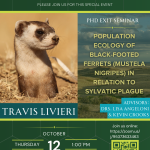Plant pathogens represent a major threat to food security as they dramatically reduce crop yield, impact the expression of desirable traits, and reduce post-harvest longevity. Plant pathogens like Pseudomonas syringae pv. tomato DC3000 (Pst) utilize a type III secretion system to deliver virulence proteins (effectors) into the cytoplasm of infected hosts to suppress host immunity. In response, plants have evolved intracellular immune receptors to perceive immunosuppression. Thus, a given pathogen effector can both suppress and activate immunity depending on the host genome.
The present work reveals an uncharacterized role for Pst as an aggressive vascular pathogen, causing systemic infection in the model plant Nicotiana benthamiana (Nb). Further, it establishes that the bacterial effector HopBA1 inhibits movement into the vascular system, despite apparent virulence within the primary infection of leaves. Simultaneously, HopBA1 was found to rapidly induce vertical bending (hyponasty) in petioles of infiltrated leaves, a novel phenotype for a bacterial effector. LC-MS/MS and RNA-Seq revealed phytohormone alteration (most significantly, a reduction in auxin and Jasmonic acid-related metabolites) and transcriptional reprogramming of developmental and defense genes not associated with Pst alone. Since Pst + HopBA1 resulted in vascular-specific bacterial growth restriction, a suite of Nb immune receptor mutants were screened for loss of HopBA1-induced hyponasty. Interestingly, bacterial growth was restored to Pst + empty vector levels in Nb eds1-/- (Enhanced Disease Resistance1) plants, which still undergo HopBA1-induced hyponasty. Together, these results imply a form of vascular-specific effector-triggered immunity (ETI) and suggest that hyponasty is due to HopBA1’s biochemical activity, rather than host recognition. Thus, HopBA1 delivery by the model pathogen Pst becomes an important tool to dissect a poorly understood area of disease resistance, specifically the genetic and molecular basis of vascular ETI.



